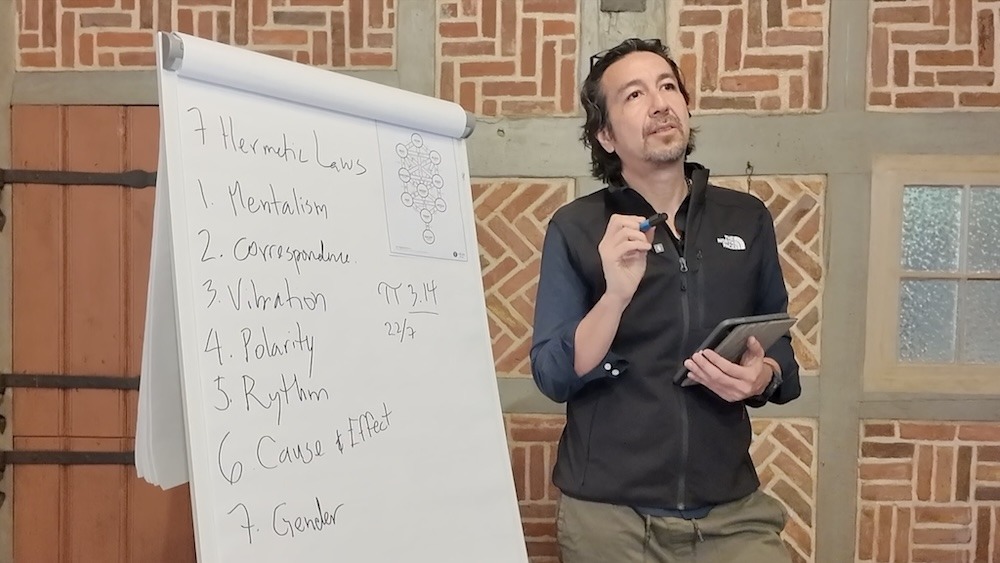Have you ever felt like there’s more than one voice inside you? Maybe a part of you craves connection, while another part warns you to stay away. Perhaps you set goals with enthusiasm, only to hear an inner voice whisper, “You’ll never succeed.” These internal conflicts are not signs of dysfunction but rather reflections of the multiple parts that make up our inner world.
In Internal Family Systems (IFS) Therapy, developed by Dr. Richard Schwartz, the human mind is seen as a system of different parts, each with its own emotions, roles, and beliefs. Some parts try to protect us from pain, while others carry deep wounds from past experiences. But beneath these parts lies something even more powerful—our Self, a compassionate, calm, and wise inner leader.
By learning to talk with our own parts, rather than ignoring or fighting them, we can unlock a profound path to healing, self-compassion, and transformation.
What Are Our Inner Parts?
Our minds are not a single, unified entity. Just like a family or a team, our inner world consists of multiple parts, each with different motivations, emotions, and fears. These parts fall into three main categories:
1. Exiles – The Wounded Parts
These are the parts that carry deep emotional pain, often stemming from childhood experiences. Exiles hold feelings of shame, fear, rejection, or unworthiness. Because their pain is overwhelming, other parts try to keep them hidden.
Example: A part of you still feels the sting of childhood bullying and carries the belief, “I will never be accepted.”
2. Protectors – The Managers and Firefighters
Protectors are the parts that try to keep us safe from emotional pain. They step in to prevent exiles from being triggered.
- Managers – These proactive protectors try to control situations to avoid pain. They may manifest as perfectionism, people-pleasing, or hyper-vigilance.
- Firefighters – These reactive protectors show up when pain is already triggered, using numbing, distraction, or self-sabotage to put out the fire.
Example: A manager part may push you to overwork so that you never feel like a failure, while a firefighter part may binge eat or engage in self-destructive behaviors to drown out feelings of shame.
3. The Self – The Compassionate Leader
Beneath all these parts is the Self—the core of who we truly are. The Self is not a part but a state of being. It is calm, confident, and compassionate, capable of leading the entire system with wisdom and understanding.
When we connect with our Self, we can talk with our parts instead of being controlled by them.
How Talking with Our Parts Heals Us
Instead of trying to suppress or fight our parts, we can speak to them directly. This practice allows us to build trust within ourselves, helping our parts feel heard, understood, and ultimately, relieved of their burdens.
Let’s look at an example of a person engaging in an inner dialogue:
Sophia’s Story: Talking to Her Fearful Part
Sophia has struggled with shame and rejection related to her weight for years. A part of her believes the world is dangerous and that she deserves humiliation—a belief rooted in childhood experiences of bullying. Instead of ignoring or criticizing this part, she engages in a dialogue.
Sophia (Self):
“I see you. I feel your fear. You’ve been working so hard to protect me. Can you tell me what you’re afraid of?”
Fearful Part:
“I don’t want you to get hurt again. If you expect rejection, it won’t be as painful when it happens.”
Sophia:
“That makes sense. You’re trying to protect me by keeping me small and hidden. But I want you to know that I’m not that scared little girl anymore. I’ve grown. I can handle things now.”
As Sophia listens, the part begins to trust her Self and loosen its grip. The goal is not to erase the part but to help it feel safe enough to step back.
This is a clip of an interview with the father of IFS, Richard Schwartz. Here he describes first hand how IFS Therapy works.
The Steps to Talking with Your Parts
You can begin your own inner dialogues using these steps:
1. Notice the Part That’s Active
When you feel overwhelmed by anxiety, shame, self-criticism, or any strong emotion, pause and ask:
“What part of me is feeling this way right now?”
2. Get Curious Instead of Judgmental
Approach the part with curiosity and compassion, rather than resistance.
Ask: “What are you trying to do for me?”
3. Listen to Its Story
Parts often carry old wounds. Ask them:
“When did you start feeling this way?”
“What happened that made you take on this role?”
4. Acknowledge and Appreciate the Part
Even the most painful or self-destructive parts have good intentions. Thank them:
“I see you’ve been protecting me. Thank you for trying to keep me safe.”
5. Offer Reassurance from Your Self
Let the part know that you (the Self) are here to lead now. Say:
“I’m grown now. I can handle things. You don’t have to do this alone anymore.”
6. Invite the Part to Release Its Burden
If the part is ready, help it let go of the pain it has carried. Visualization can help, like imagining the part placing its burden in a stream, fire, or light.
7. Reassess and Integrate
Check in: “How do you feel now?”
Most parts feel relief and trust after being heard. Over time, they shift into healthier roles in your system.
Why This Works
When we resist or suppress our parts, they become louder. But when we listen and talk to them with compassion, they soften and transform.
Healing doesn’t come from fighting ourselves—it comes from understanding ourselves.
Instead of seeing our inner world as chaotic or broken, we can recognize it as a system of well-intentioned parts that simply need guidance. And that guidance comes from within.
Final Thoughts: Becoming Our Own Inner Guide
Talking with our parts isn’t just a therapy technique—it’s a lifelong practice of self-connection.
Every time we pause and listen instead of reacting, we strengthen our relationship with ourselves. Every time we lead with Self-energy, we transform old wounds into wisdom.
So the next time you feel anxious, critical, or overwhelmed, try a different approach. Instead of rejecting your parts, talk to them. You might be surprised at what they have to say.







